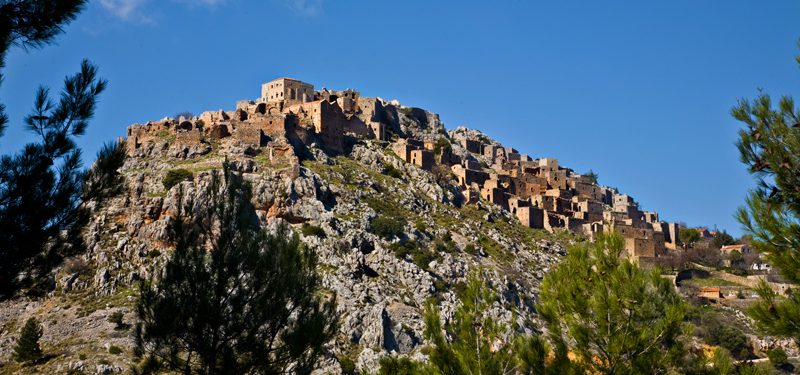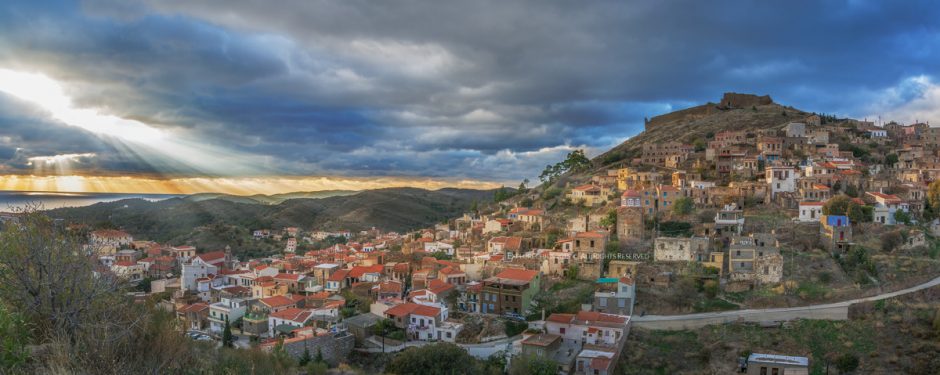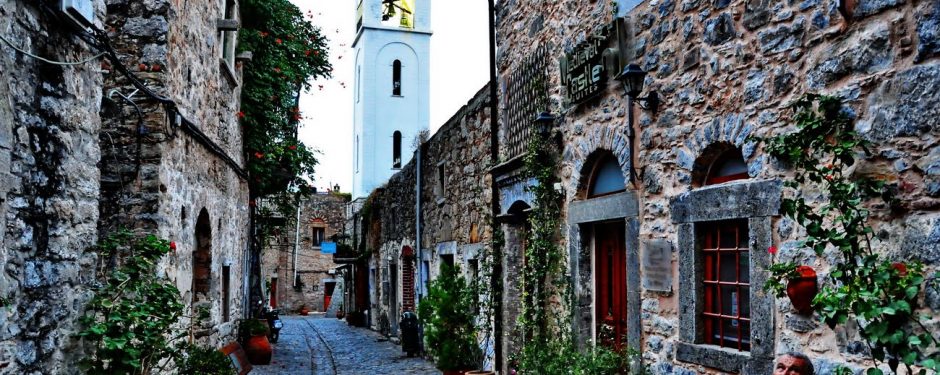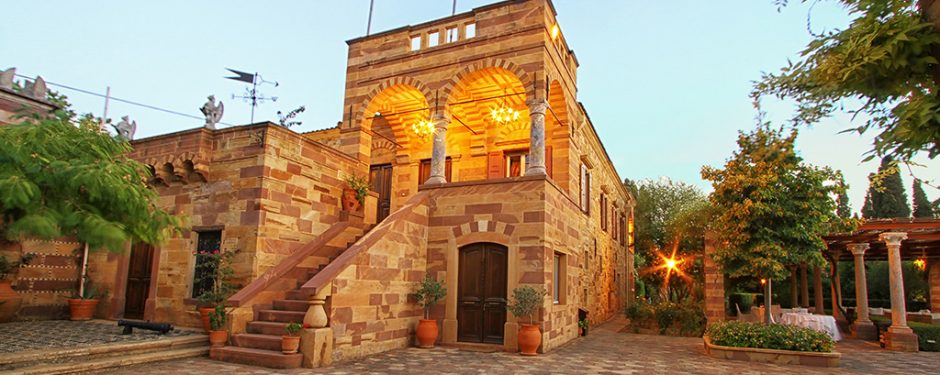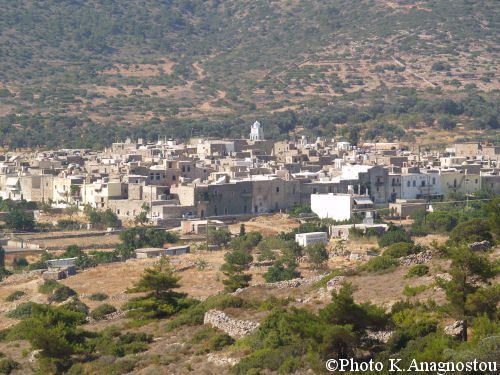Thimiana is located 7 km to the South of the city of Chios, 10 min by car. It is among the larger villages on the island with approximately 1600 inhabitants. The village used to be called “Efthymiana”, that is place renowned for its many quarries from which the “Thymiana” stone was extracted in many shades of brown and red. The Thymiana stone is an excellent ornamental material for buildings. Many mansions and churches in Kambos are built with this stone. The village of Thymiana has a primary school, sports associations, a swimming club, a cultural club as well as the…
Chios Villages
North Chios differs greatly from the southern part in respect to physical environment and productivity. Housing communities are small and isolated, and always far from the sea. The houses were roughly built, and the only sign of the Genoese influence, aside from written sources, are the central towers in the villages. Anavatos, 16 Km from town, is an exception. It has no defense tower and is not mentioned in Genoese sources of information. The village was probably built for defense, as an outlook post over the bare western shores of the island. It is not as old as the medieval…
Located about 40km. away from the capital of the island, Volissos has a long history. At Volissos, as to Thoukidedes, there was once an ancient Aeolic city, and the rumor that it was the birthplace of Homer is still a legend told. On the top of the hill was built a castle in the medieval times. The Byzantine castle has a trapezoid shape with six circular towers. Inside the castle there were several buildings, cisterns and churches. There was also a tunnel connecting the castle with the seashore and the Pithonas district. Volissos is the biggest village in NW Chios…
On the main road of central-western Chios, after passing Karyes, on our route to the west, in a distance of 16 Km from Chios town, on a rocky hill, there is the graphic village of Avgonyma. The houses are built of stone and the residents are too few. During the sunset, the view of the Aegean sea and of Psara, the medieval observation post and the clean bay of Elinda are unique motives for the modern traveler. These are excellent local delicacies in the village taverns. There is a unique pine-covered forest which is the most important of Chios and…
Mesta, is a perfectly preserved village-castle of the Byzantine period (14th and 15th centuries). It has been designated a listed monument and it is found 35 Km southwest of the town. The Castle-village, takes you back centuries, with its very few changes. It keeps its houses tied tightly together in what seems like a closed and compact form. The streets are cobbled and narrow. This type of fortress, a four-cornered structure, was built for protection against the frequent attacks by pirates and Turks, as well as for better cultivation of the mastic bush. It lies in small, treeless valleys far…
One of the most beautiful areas of the island is Kambos, a green valley 3 Km south of Chora covered with citrus orchards. Kambos (“Plain”) is a flat land that stretches, along the east coast of the island of Chios, about 10 Km long and 2 Km wide. The low mountains that surround it from the west are the source of its underground waters; what makes Kambos an endless garden with flowers and citrus trees, very close to the capital of Chios. Kambos represents a unique, both residential and agricultural site, situated in a very critical area of Greece and…
lympi is a 14th century medieval village located 31 Km south of the town of Chios and 6 Km after Pyrgi on the road to Mesta. It has been designated a listed monument. It keeps its houses tied tightly together in what seems like a closed and compact form. The streets are cobbled and narrow. This type of fortress, a four-cornered structure, was built for protection against the frequent attacks by pirates and Turks, as well as for better cultivation of the mastic bush. It lies in small, treeless valleys far from the sea. The gray houses had doors and windows that faced to the…
Search
Reservation From
Book by phone
+30.2271033315 / +30.6944788508
Monday to Friday 9.00am - 22.00pm


